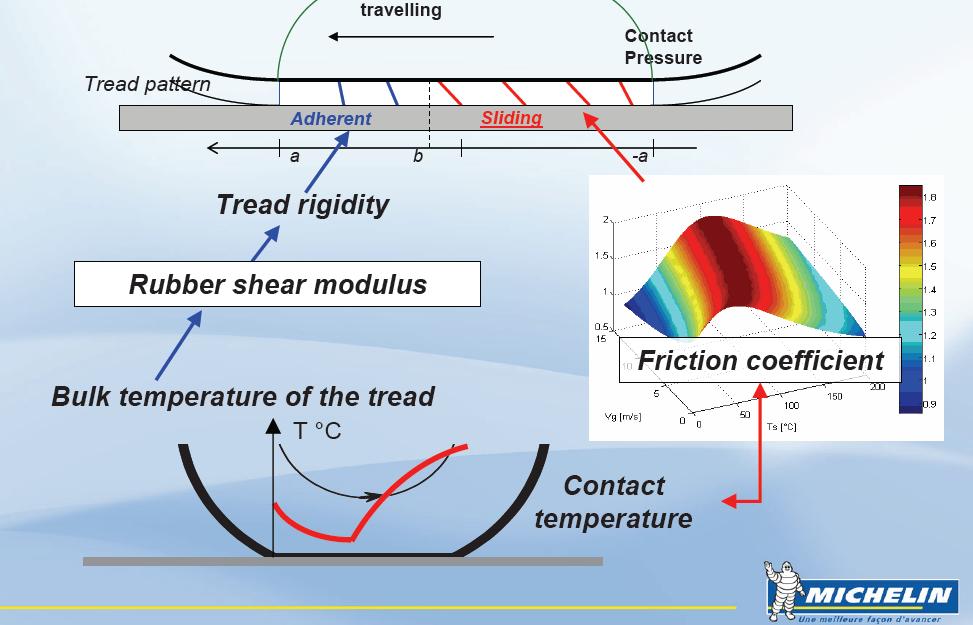So now I'm wondering if anybody has information about the modification of that coefficient depending on the tire/ground temperature or the tire pressure ? Does that kind of information exist ?
- Login or Register
No account yet? Sign up


Assuming that does it. Or if you really think they just have to be worn in a bit, scuff them in practice.marcush. wrote:the theory of tyre temperature correlation to performance is countered by the sight of Formula 1 cars leaving the pits with perfectly preheated tyres but still struggling for grip for at least half a lap....
I wonder if it were not better to have tyre "chewing" machines (run on a Drum and apply vertical load and possibly a bit of slip angle) in the pits to briong them up to their operating window and come out of the pits with the tyre already switched on....is this allowable at all?
we know what it does when scuffing them ,but you still need them to get to work don´t we ? So as you can´t have a second car bringing your tyres up to working conditions ...what else? have a chemical agent dipping ?Jersey Tom wrote:Assuming that does it. Or if you really think they just have to be worn in a bit, scuff them in practice.marcush. wrote:the theory of tyre temperature correlation to performance is countered by the sight of Formula 1 cars leaving the pits with perfectly preheated tyres but still struggling for grip for at least half a lap....
I wonder if it were not better to have tyre "chewing" machines (run on a Drum and apply vertical load and possibly a bit of slip angle) in the pits to briong them up to their operating window and come out of the pits with the tyre already switched on....is this allowable at all?
Get proper tires to begin with.marcush. wrote:So as you can´t have a second car bringing your tyres up to working conditions ...what else?
I don't think they are "perfectly" preheated. Even if they were the right temperature when they took them out of the blankets, they're going to cool down quite a bit while the pitcrew waits, puts them on, and then the car trundles down the pitlane at 80kph or whatever. It takes some work to get them back up.marcush. wrote:the theory of tyre temperature correlation to performance is countered by the sight of Formula 1 cars leaving the pits with perfectly preheated tyres but still struggling for grip for at least half a lap....
no they will heat all the way through they just need enough time in the blanket.Lycoming wrote:It is my understanding that to really get a tire up to temperature, you need to heat the entire thing all the way through, and get heat into the actual carcass of the tire. Blankets only heat up the surface.
Stuart Hepworth’s reputation as a tyre industry innovator is impressive. He developed and patented microwave and infra-red based alternatives to the electric blankets motorsport pit crews use to keep tyres warm. F1 teams Renault and McLaren tested and approved them, but the FIA – in trying to keep team costs down – banned the system. Stuart has also worked with numerous Le Mans 24 Hour Race teams, including recent winners Audi and Peugeot, on tyre heating technology.

Unfortunately it is a bit more involved than that, even if the manufacturers did give away the booksheets for all their compounds (which they will never do).MadMatt wrote:My question was a bit naive, since you cannot know the EXACT rubber mixture used by the manufacturer. If all of them would provide the composition that if a company (like TüV for example) would test all of them using the same method, I am sure we could get a formula defining the friction coefficient depending on the temperature.